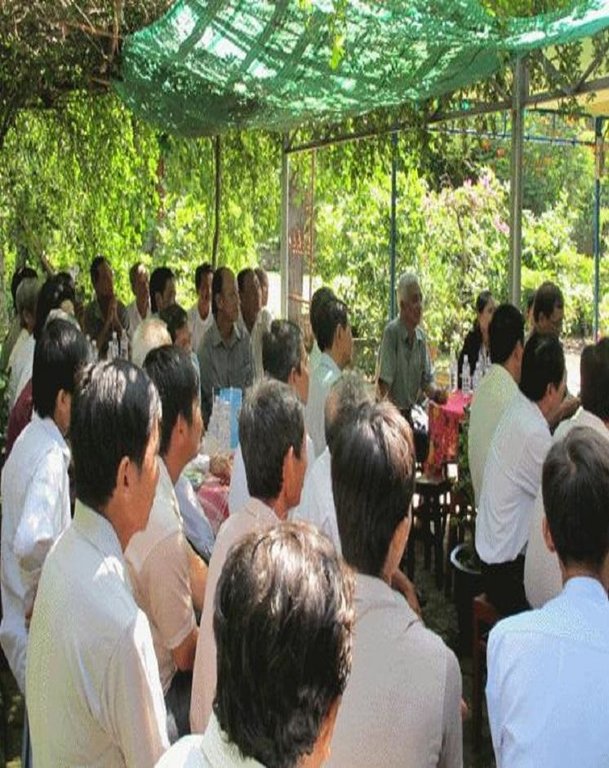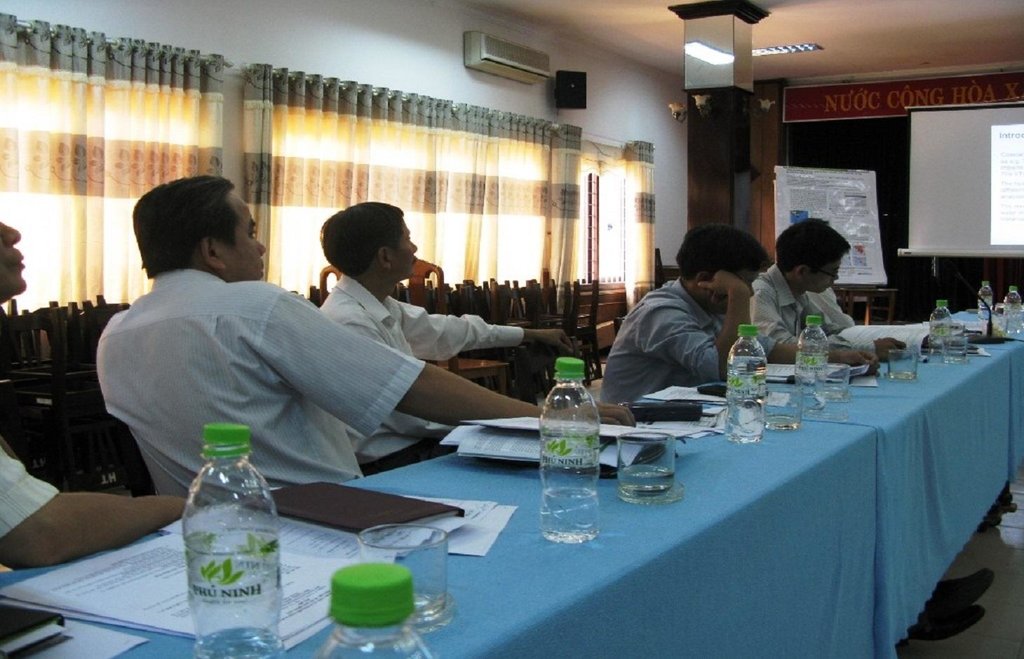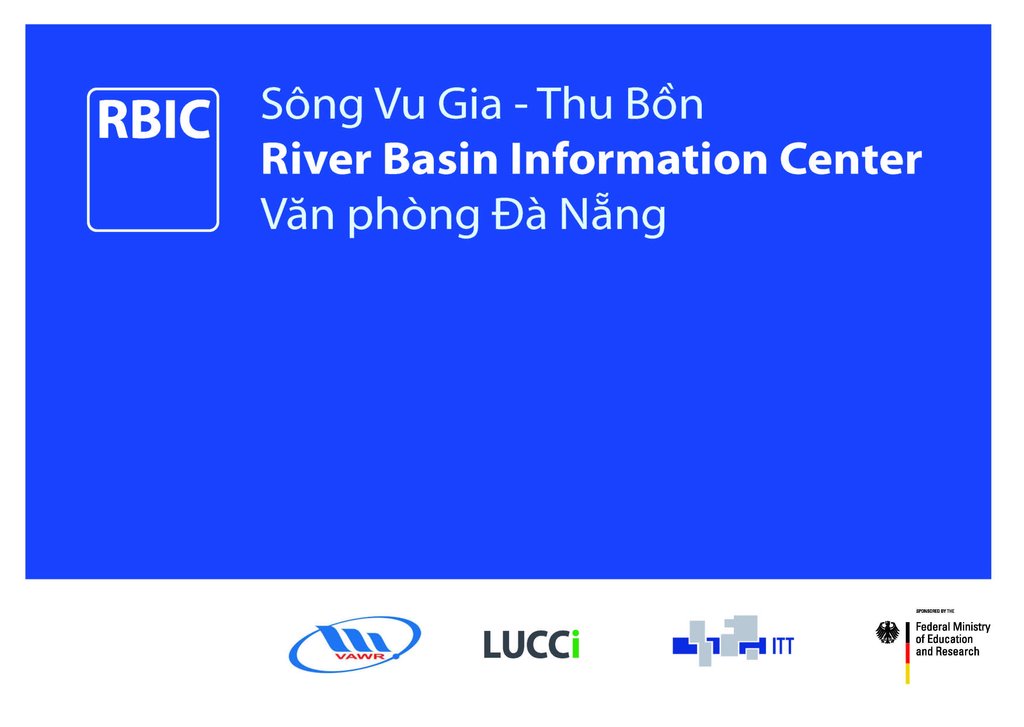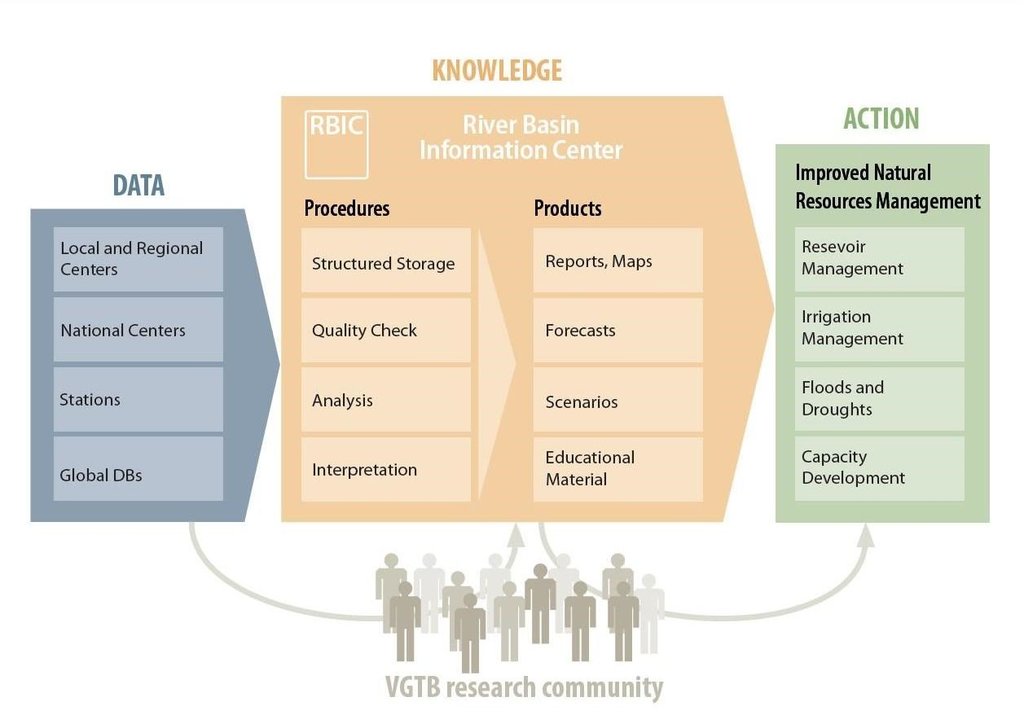Vu Gia Thu Bon River Basin Information Centre [เวียดนาม]
- ผู้สร้างสรรค์:
- การอัพเดท:
- ผู้รวบรวม: Justyna Sycz
- ผู้เรียบเรียง: –
- ผู้ตรวจสอบ: Fabian Ottiger, Deborah Niggli
Trung tâm thông tin lưu vực sông VGTB (Vietnamese)
approaches_2536 - เวียดนาม
ดูส่วนย่อย
ขยายทั้งหมด ย่อทั้งหมด1. ข้อมูลทั่วไป
1.2 รายละเอียดที่ติดต่อได้ของผู้รวบรวมและองค์กรที่เกี่ยวข้องในการประเมินและการจัดเตรียมทำเอกสารของแนวทาง
ผู้เชี่ยวชาญ SLM:
Nauditt Alexandra
alexandra.nauditt@th-koeln.de
University of Applied Science, TH Köln
เยอรมนี
ผู้เชี่ยวชาญ SLM:
Ribbe Lars
lars.ribbe@th-koeln.de
University of Applied Science, TH Köln
เยอรมนี
ผู้เชี่ยวชาญ SLM:
Nguyen Phong
phongicd@gmail.com
Vietnam Academy for Water Resources
Hanoi
เวียดนาม
ชื่อของโครงการซึ่งอำนวยความสะดวกในการทำเอกสารหรือการประเมินแนวทาง (ถ้าเกี่ยวข้อง)
Book project: Making sense of research for sustainable land management (GLUES)ชื่อของโครงการซึ่งอำนวยความสะดวกในการทำเอกสารหรือการประเมินแนวทาง (ถ้าเกี่ยวข้อง)
University of Applied Science, TH Köln (TH Köln) - เยอรมนีชื่อของโครงการซึ่งอำนวยความสะดวกในการทำเอกสารหรือการประเมินแนวทาง (ถ้าเกี่ยวข้อง)
Vietnam Academy for Water Resources (VAWR) - เวียดนาม1.3 เงื่อนไขที่เกี่ยวข้องกับการใช้ข้อมูลที่ได้บันทึกไว้ผ่านทาง WOCAT
วันที่เก็บรวบรวมข้อมูล (ภาคสนาม):
27/07/2015
ผู้รวบรวมและวิทยากรหลักยอมรับเงื่อนไขเกี่ยวกับการใช้ข้อมูลที่ถูกบันทึกผ่านทาง WOCAT:
ใช่
1.4 การอ้างอิงถึงแบบสอบถามเรื่องเทคโนโลยี SLM
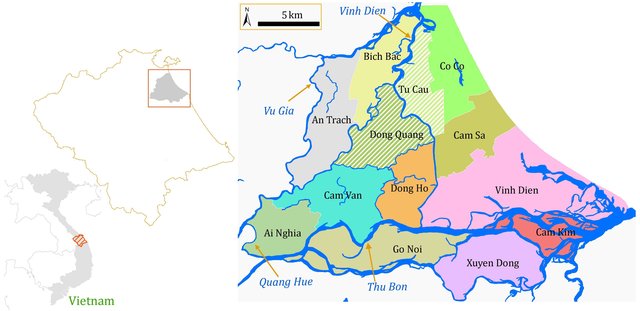
Water saving through reuse of return flow in … [เวียดนาม]
Return flow from paddy fields is strategically collected before being lost to rivers and is reused as an effective source of agricultural water.
- ผู้รวบรวม: Justyna Sycz
2. คำอธิบายของแนวทาง SLM
2.1 การอธิบายแบบสั้น ๆ ของแนวทาง
The VGTB River Basin Information Centre (RBIC) offers decision support tools for stakeholders and aims at providing comprehensive information and consulting services to the water and land users according to their demands.
2.2 การอธิบายอย่างละเอียดของแนวทาง
การอธิบายอย่างละเอียดของแนวทาง:
Aims / objectives: Sufficient and sustainable water resource management at river basin scale can only be achieved if it is based on dialogue between all relevant stakeholders, and supported by adequate data. It follows then, that a robust system of monitoring, evaluation, reporting and communication is needed. The lack of appropriate management strategies which would bring these tools together has been underlined by stakeholders, and observed by researchers, involved in the research project LUCCi - Land Use and Climate Change Interactions in the VGTB River Basin. In order to offer a comprehensive decision-making support system, based on scientific knowledge and research results, the Institute for Technology and Resources Management (ITT, TH Köln, Germany) in cooperation with the Vietnam Academy for Water Resources (VAWR, Hanoi, Vietnam) established the VGTB River Basin Information Centre in Da Nang. The overall objective of RBIC is to support efficient and sustainable water and land use. The support provided for the implementation of the water saving technology for paddy systems is one of the services offered by the centre.
Methods: The VGTB RBIC is an independent, local institution administrated by the German and Vietnamese coordinators of LUCCi, financed by project sources and located at the Central Department of the Vietnam Academy of Water Resources in Da Nang. As a scientific organization, the VGTB RBIC provides the advantages of impartiality, a detailed knowledge base and a broad interdisciplinary perspective. Through different dissemination activities, such as visits to relevant institutions, information material (brochures, flyers in Vietnamese) as well as training courses and capacity building measures, the relevant stakeholders are well-informed about the activities of the Information Centre. On demand, the following products and services are provided in the VGTB-RBIC: (a) Thematic maps on land use, hydrology and river basin development; (b) A comprehensive database of the VGTB river basin (VGTB RBIS - River Basin Information System, open source) (c) VGTB State of the Basin Report as a decision-support instrument: the report was prepared by the LUCCi research team and provides relevant information on climatic, environmental and socioeconomic data and trends; (d) Hydro-meteorological, hydrograph and salinity data; (e) Flood and drought risk assessment; (f) Scenarios and modelling (reservoir operation, salinity intrusion, irrigation management scenarios); (g) Organization of meetings and discussions on key issues of the development of the VGTB; (f) Training and capacity building services related to the demands of stakeholders.
Role of stakeholders: Thus a heterogeneous stakeholder platform has been established in the case study region that includes scientific institutions, policy makers, public administration representatives as well as private sector companies. It is clear that the major problems of the VGTB River Basin can be only addressed, and adequate solutions identified, if based on active cross-sectoral stakeholder participation. Therefore, the interaction among stakeholders and RBIC plays a key role: the services are offered for the stakeholders, and stakeholder feedback is the basis for providing adequate information services and conducting applied based research.
2.3 รูปภาพของแนวทาง
2.5 ประเทศ ภูมิภาค หรือสถานที่ตั้งที่ได้นำแนวทางไปใช้
ประเทศ:
เวียดนาม
ภูมิภาค/รัฐ/จังหวัด: :
Da Nang
ข้อมูลเฉพาะเพิ่มเติมของสถานที่ตั้ง:
Central Vietnam
2.6 วันที่เริ่มต้นและสิ้นสุดของแนวทาง
ระบุปีที่เริ่ม:
2013
การสิ้นสุดลง (ถ้าแนวทางไม่ได้ใช้อีกต่อไป):
2015
2.7 ประเภทของแนวทาง
- ใช้โครงงานหรือแผนงานเป็นฐาน
2.8 เป้าหมายหรือวัตถุประสงค์หลักของแนวทาง
The Approach focused mainly on other activities than SLM (Water management, agriculture, irrigation, water availability: support the local water users in the implementation of adequate water management strategies)
1. Establish a communication platform to discuss water and land use related problems, and create transparency among water users.
2. Support and foster the science-policy-society dialogue offering a cross-sectoral neutral space for discussion, consulting and capacity building for all stakeholders and water users (farmers, decision-makers, public institutions, private sector companies).
3. Provide a comprehensive information service and decision support system to stakeholders according to their demands. The following specific products and services are provided by the VGTB-RBIC: Thematic maps on land uses, hydrology and river basin development • Comprehensive database of the VGTB river basin (VGTB RBIS - River Basin Information System, open source) • VGTB State of the Basin Report as a decision support instrument: the report was prepared by the LUCCi research team and provides relevant information on climatic, environmental and socioeconomic data and trends • Hydro-meteorological, hydrograph and salinity data • Flood and drought risk assessment • Scenarios and modelling (reservoir operation, salinity intrusion, irrigation management scenarios) • Organization of meetings and discussions on key issues of the development of the VGTB • Training and capacity building services related to the demands of stakeholders.
The SLM Approach addressed the following problems: The lack of communication between the relevant institutions and water users, the demand for comprehensive decision-support instruments, difficulties with data availability - typically distributed and available at different institutions, as well as conflicts over resource use, were the main problems addressed by the approach. The conflicts caused by the rapid expansion of hydropower since 2008 in the VGTB river basin have especially demonstrated the inadequate participation of local stakeholders in planning processes. Hydropower development has adverse effects on downstream water availability, especially during the dry season, affecting drinking water supply and irrigation.
2.9 เงื่อนไขที่เอื้ออำนวยหรือเป็นอุปสรรคต่อการนำเทคโนโลยีภายใต้แนวทางนี้ไปปฏิบัติใช้
การจัดตั้งระดับองค์กร
- เป็นอุปสรรค
Lack of communication between the institutions and inadequate stakeholder involvement in the decision making process.
Treatment through the SLM Approach: VGTB RBIC offers a cross sectoral communication platform and bring together all relevant stakeholders: organization of workshops and meetings as well as visits to the relevant institutions.
ความรู้เกี่ยวกับ SLM การเข้าถึงการสนับสนุนด้านเทคนิค
- เป็นอุปสรรค
A robust system of monitoring system was missed in the region: hydro-meteorological data, monitoring of water quantity.
Treatment through the SLM Approach: A monitoring network has been established as part of the LUCCi project.
อื่นๆ
- เป็นอุปสรรค
Lack of information about the river basin in order to ensure an adequate decision making.
Treatment through the SLM Approach: A “State of the Basin Report” including all available data and information about the river basin has been elaborated (climatic, environmental, hydrological, land use and socioeconomic data and trends); River Basin Information System: Comprehensive data base of the VGTB river basin through the open source VGTB River Basin Information System.
3. การมีส่วนร่วมและบทบาทของผู้มีส่วนได้ส่วนเสียที่เกี่ยวข้อง
3.1 ผู้มีส่วนได้ส่วนเสียที่เกี่ยวข้องในแนวทางนี้และบทบาท
- นักวิจัย
National and international researchers involved in the LUCCi project
- องค์กรพัฒนาเอกชน
Authorities of a Water Management Unit (WMU)
- รัฐบาลแห่งชาติ (ผู้วางแผน ผู้ทำการตัดสินใจ)
Regional relevant institutions (DONRE, MARD, PPC Quang Nam)
- องค์การระหว่างประเทศ
3.2 การเกี่ยวข้องของผู้ใช้ที่ดินระดับท้องถิ่นหรือชุมชนระดับท้องถิ่นในช่วงต่างๆของแนวทาง
| ความเกี่ยวข้องของผู้ใช้ที่ดินระดับท้องถิ่นหรือชุมชนระดับท้องถิ่น | ระบุผู้ที่มีส่วนเกี่ยวข้องและอธิบายกิจกรรม | |
|---|---|---|
| การริเริ่มหรือการจูงใจ | ไม่ลงมือ | Stakeholder analysis (including of all ineterested groups) |
| การวางแผน | ไม่ลงมือ | Local and regional decision makers are involved: workshops, discussions and surveys in order to collect relevant socio-economic and land use data, identify research demand and challenges |
| การดำเนินการ | จ่ายเงินหรือสนับสนุนจากภายนอก | Land user decide on whether and which technologies they want to implement. |
| การติดตามตรวจสอบหรือการประเมินผล | ไม่มี | |
| Research | ปฏิสัมพันธ์ | Land users provide relevant information and data on their farms (size, yields) for research purposes. 'Aims/Objectives” elaborated and prepared for the stakeholders by Vietnamese and international researchers based on scientific results and data from land users. |
3.3 แผนผังแสดงขั้นตอนการทำงาน (ถ้ามี)
คำอธิบาย:
The services of the VGTB Info-Centre are provided by a team of researchers and experts from national and international institutions. The services and products are offered to the following target groups: Public administration and decision-makers in Central Vietnam, Land and water users, researchers, and private sector companies in the field of water and land management (e.g. irrigation, hydropower construction)
Interaction and communication between the groups involved:
- based on stakeholders and target groups’ feedback, the centre can provide services suited to the needs of the regional institutions, considering current socioeconomic development and environmental changes in the river basin
- the centre provides a communication platform for the target groups involved from different sectors: private companies, public administration, researchers, land and water users.
3.4 การตัดสินใจเลือกใช้เทคโนโลยี SLM
ระบุผู้ที่ทำการตัดสินใจเลือกเทคโนโลยีมากกว่าหนึ่งวิธีไปปฏิบัติใช้:
- ผู้เชี่ยวชาญ SLM เป็นผู้ตัดสินใจหลัก ที่ติดตามให้คำปรึกษากับผู้ใช้ที่ดิน
การอธิบาย:
Decisions on the method of implementing the SLM Technology were made by mainly by SLM specialists with consultation of land users
4. การสนับสนุนด้านเทคนิค การสร้างขีดความสามารถ และการจัดการด้านความรู้
4.1 การสร้างขีดความสามารถ / การอบรม
ได้มีการจัดอบรมให้แก่ผู้ใช้ที่ดินหรือผู้มีส่วนได้ส่วนเสียคนอื่น ๆ หรือไม่:
ใช่
- decision makers/ experts/ local scientists
รูปแบบการอบรม:
- ใช้พื้นที่ทำการสาธิต
หัวข้อที่พูด:
key aspects of an integrated river basin management (monitoring, data management and hydrological modelling); current situation, development and challenges in the VGTB river basin; training on adequate tools and technologies (alternative irrigation strategies for paddy fields: reuse of return flow)
4.2 การบริการให้คำแนะนำ
ผู้ใช้ที่ดินมีการเข้าถึงการรับบริการให้คำปรึกษาหรือไม่:
ใช่
ระบุว่ามีบริการให้คำปรึกษาหรือไม่:
- ที่ศูนย์ถาวร
การอธิบาย/แสดงความคิดเห็น:
Name of method used for advisory service: River Basin Information Center - RBIC; Key elements: Stakeholder Workshops, Trainings on alternative irrigation strategies for paddy fields: reuse of return flow
Advisory service is very adequate to ensure the continuation of land conservation activities; Researchers (VAWR): can offer trainings and conduct dissemination activities; Local institutions (e.g. People's Committee of Quang Nam Province): training, dissemination activities, financial support
4.3 การเสริมความแข็งแกร่งให้กับสถาบัน (การพัฒนาองค์กร)
สถาบันได้รับการจัดตั้งขึ้นมาหรือเสริมความแข็งแกร่งโดยแนวทางนี้หรือไม่:
- ใช่ อย่างมาก
ระบุระดับของสถาบันที่ได้รับการเสริมความแข็งแกร่งหรือจัดตั้งขึ้นมา:
- ท้องถิ่น
ระบุประเภทของการให้ความช่วยเหลือสนับสนุน:
- การสร้างขีดความสามารถ / การอบรม
- research
ให้รายละเอียดเพิ่มเติม :
Training for decision makers and professionals; Research: hydrological modeling
4.4 การติดตามตรวจสอบและประเมินผล
การติดตามตรวจสอบและประเมินผลเป็นส่วนหนึ่งของแนวทางหรือไม่:
ใช่
ความคิดเห็น:
management of Approach aspects were ad hoc monitored by project staff through observations
management of Approach aspects were ad hoc monitored by project staff through measurements
There were several changes in the Approach as a result of monitoring and evaluation: The approach was based on the stakeholder-research interactions. The approach objectives and methodology was adapted to the local conditions and challenges.
There were no changes in the Technology as a result of monitoring and evaluation
4.5 การวิจัย
การวิจัยเป็นส่วนหนึ่งของแนวทางหรือไม่:
ใช่
ระบุหัวข้อเรื่อง:
- สังคมวิทยา
- เทคโนโลยี
- hydrological modeling
ให้ข้อมูลเพิ่มเติมและให้ระบุผู้ทำการวิจัย:
The implementation of return flow from paddy fields as alternative irrigation technology under local conditions was performed under the framework of LUCCi project (ITT).
Research was carried out both on station and on-farm
5. การสนับสนุนด้านการเงินและวัสดุอุปกรณ์
5.1 ระบุงบประมาณประจำปีสำหรับแนวทาง SLM นี้
ถ้าหากว่างบประมาณประจำปีไม่เป็นที่ทราบแน่นอน ให้ระบุช่วงลงไป:
- < 2,000
แสดงความคิดเห็น (แหล่งของการระดมทุน ผู้บริจาคคนสำคัญ):
Approach costs were met by the following donors: international (International (German Federal Ministry of Education and Research, BMBF)): 70.0%; government (National (Vietnam Academy for Water Resources, VAWR) ): 30.0%
5.4 เครดิต
มีการจัดหาเครดิตมาให้ภายใต้แนวทาง SLM หรือไม่:
ไม่ใช่
6. การวิเคราะห์ผลกระทบและการสรุป
6.1 ผลกระทบของแนวทาง
ช่วยให้ผู้ใช้ที่ดินนำเอาเทคโนโลยี SLMไปใช้และบำรุงรักษาสภาพไว้ได้หรือไม่:
- ไม่ใช่
- ใช่ เล็กน้อย
- ใช่ ปานกลาง
- ใช่ อย่างมาก
Decreased water use;efficient resource management
ทำให้กลุ่มด้อยโอกาสมีอำนาจทางสังคมและเศรษฐกิจหรือไม่:
- ไม่ใช่
- ใช่ เล็กน้อย
- ใช่ ปานกลาง
- ใช่ อย่างมาก
Did other land users / projects adopt the Approach?
- ไม่ใช่
- ใช่ เล็กน้อย
- ใช่ ปานกลาง
- ใช่ อย่างมาก
Did the Approach lead to improved livelihoods / human well-being?
- ไม่ใช่
- ใช่ เล็กน้อย
- ใช่ ปานกลาง
- ใช่ อย่างมาก
6.2 แรงจูงใจหลักของผู้ใช้ที่ดินเพื่อที่จะนำ SLM ไปปฏิบัติใช้
- การผลิตที่เพิ่มขึ้น
- well-being and livelihoods improvement
Increase water use efficiency
6.3 ความยั่งยืนของกิจกรรมของแนวทาง
ผู้ใช้ที่ดินสามารถทำให้สิ่งต่างๆ ที่ได้ปฏิบัติใช้โดยแนวทางนี้ยั่งยืนได้หรือไม่ (โดยไม่มีการสนับสนุนจากภายนอก):
- ใช่
6.4 จุดแข็งและข้อได้เปรียบของแนวทาง
| จุดแข็ง / ข้อได้เปรียบของแนวทางในทัศนคติของผู้รวบรวมหรือวิทยากรหลัก |
|---|
| The approach is managed by researchers. This has the advantages of impartiality, a detailed knowledge base and a broad interdisciplinary perspective. |
| Adaptability to stakeholders needs. (How to sustain/ enhance this strength: Strong interaction between the management of the VGTB RBIC and regional stakeholders is necessary: organize regular meetings and workshops; Stakeholders regularly inform the centre about their information requirements.) |
|
Monitoring, evaluation, reporting and communication are integrated, summarized and carried out by one institution. |
6.5 จุดอ่อน / ข้อเสียเปรียบของแนวทางและวิธีในการแก้ไข
| จุดอ่อน / ข้อเสียเปรียบในทัศนคติของผู้ใช้ที่ดิน | สามารถแก้ไขปัญหาได้อย่างไร |
|---|---|
| It needs long-term commitment from research, from extension, and from the government to support such a service for the benefit of all people and the environment. |
| จุดอ่อน / ข้อเสียเปรียบในทัศนคติของผู้รวบรวมหรือวิทยากรหลัก | สามารถแก้ไขปัญหาได้อย่างไร |
|---|---|
|
The VGTB RBIC is a new institution, unknown to the local stakeholders. |
Provide dissemination activities and trainings in order to explain the decision making process and the role of VGTB RBIC as support instrument. |
|
The approach was developed as part of a research project. There is the risk, that the scale of activities and services will be reduced after the end of the project duration. |
Try to obtain financial resources by the local and public institutions in order to develop and manage the center after the end of the project. |
7. การอ้างอิงและการเชื่อมต่อ
7.1 วิธีการหรือแหล่งข้อมูล
- ไปเยี่ยมชมภาคสนาม การสำรวจพื้นที่ภาคสนาม
- การสัมภาษณ์กับผู้ใช้ที่ดิน
7.2 การอ้างอิงถึงสิ่งตีพิมพ์
ชื่อเรื่อง ผู้เขียน ปี ISBN:
Ribbe, L., Viet, Quoc Trinh, ABM Firoz, Anh Thu Nguyen, Uyen Nguyen, Alexandra Nauditt (2016) Integrated River Basin Management in the Vu Gia Thu Bon Basin
ช่องทางในการสืบค้น และราคา:
Nauditt, Ribbe (editors) Land Use and Climate Change Interaction in Central Vietnam, Springer Book Series Water Resources Management and Development
ลิงก์และโมดูล
ขยายทั้งหมด ย่อทั้งหมดลิงก์

Water saving through reuse of return flow in … [เวียดนาม]
Return flow from paddy fields is strategically collected before being lost to rivers and is reused as an effective source of agricultural water.
- ผู้รวบรวม: Justyna Sycz
โมดูล
ไม่มีโมดูล



